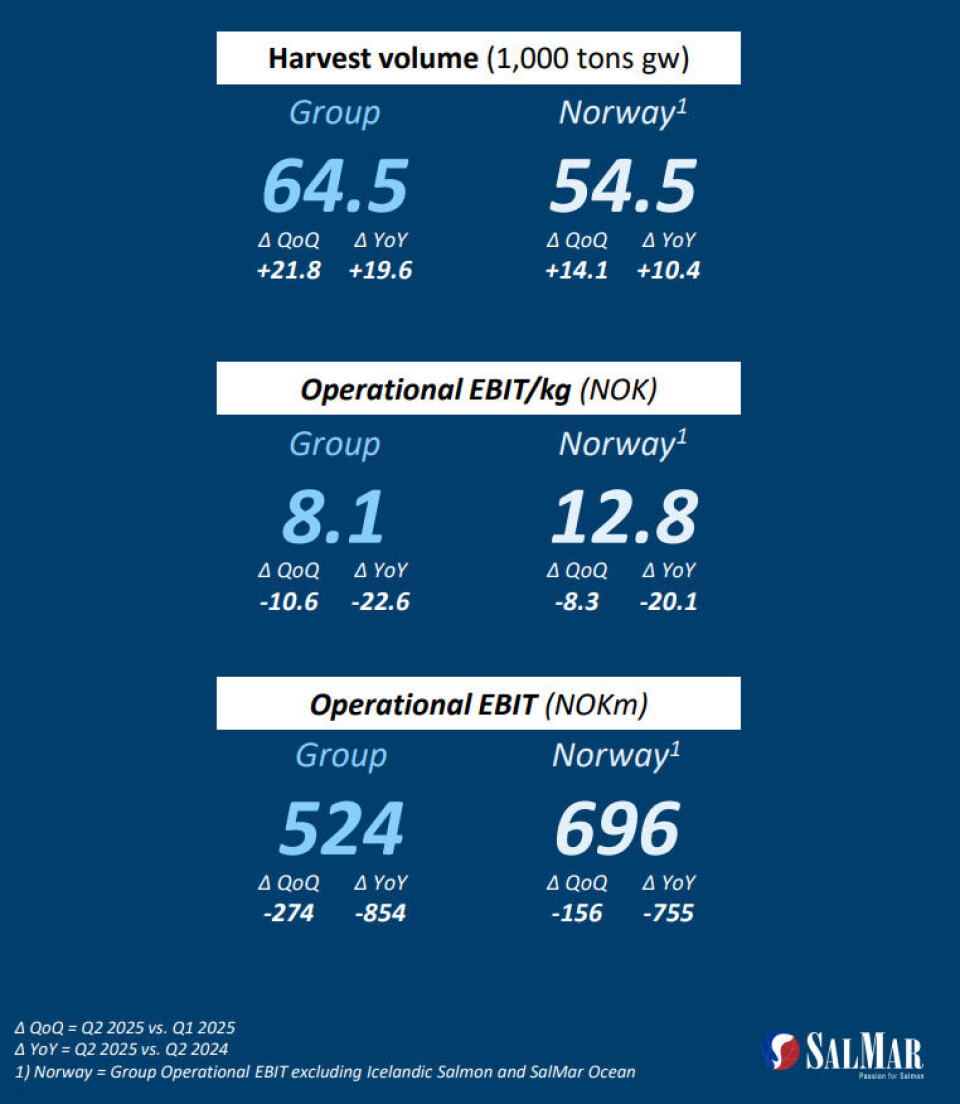
Stronger biology but weaker profit for SalMar in Q2
Salmon heavyweight harvested 44% more volume than in same period last year but made just 38% of the EBIT
Salmon farming heavyweight SalMar increased its harvest volume by 44% in the second quarter of 2025 compared to the same period last year, but saw its operating profit fall by 62% year on year.
Operational EBIT for SalMar group, which includes income from its subsidiary Icelandic Salmon and joint venture Scottish Sea Farms, was NOK 524 million (£38.2m), down by almost two-thirds from the NOK 1.378 billion operating profit made in Q2 2024.
Harvest volume for the group was 64,500 gutted weight tonnes (Q2 2024: 44,800 gwt), and EBIT per kilo was NOK 8.1 (NOK 30.7).
Downgraded fish
SalMar said that as expected, the second quarter was marked by weak price achievement due to a high proportion of downgraded fish, particularly in Central Norway.

Nonetheless, SalMar’s Norwegian operations still performed best, making an operating profit of NOK 696m, although this was less than half of the NOK 1.451bn made in Q2 2024. That EBIT was also offset to some extent by losses for offshore fish farming segment SalMar Ocean (-75m NOK), Icelandic Salmon (-97m NOK), and Scottish Sea Farms (-28m NOK).
SalMar also pointed out that during Q2 the spot price of salmon on the SISALMON index, which is based on Norwegian salmon exported to Europe, averaged NOK 73.1 per kg, down from NOK 110.9 per kg in the same period last year.
Strong growth in sea
Although the financial result was weakened, growth in the sea had been very good, paving the way for increased volume, with a higher share of superior quality fish.
“We are pleased with the biological development during the quarter. This lays the foundation for increased volume and positive cost development in the second half of the year,” said SalMar chief executive Frode Arntsen.
Increased harvest
The strong biological performance and the completion of the purchase of northern Norway salmon farmer Wilsgård AS during the quarter has led SalMar to increase its 2025 harvest volume guidance by 4,000 gwt.
It expects to harvest an extra 6,000 gwt in Norway, but 2,000 fewer tonnes in Iceland, where Icelandic Salmon has faced biological challenges at sea due to bacterial kidney disease and is focused on building up biomass. Volume guidance for Scottish Sea Farms, which is owned 50-50 by SalMar and Lerøy Seafood Group, remains unchanged at 32,000 gwt for 2025.
“SalMar now expects 262,000 tonnes in Norway, 7,200 tonnes from SalMar Ocean, 13,000 tonnes in Iceland, and 32,000 tonnes in Scottish Sea Farms (100% basis). Taking into account the relative share from Scottish Sea Farms (Editor’s note: 16,000 gwt), the group expects a total of 298,000 tonnes, an 18% increase in harvest volume compared to 2024,” the company said in a press release.
“Although the first half has been marked by lower salmon prices due to increased volume, and continued global uncertainty, SalMar continues to experience strong demand for its products. SalMar expects lower global supply growth in the second half of 2025 compared to what has been experienced in the first half of 2025.”























































